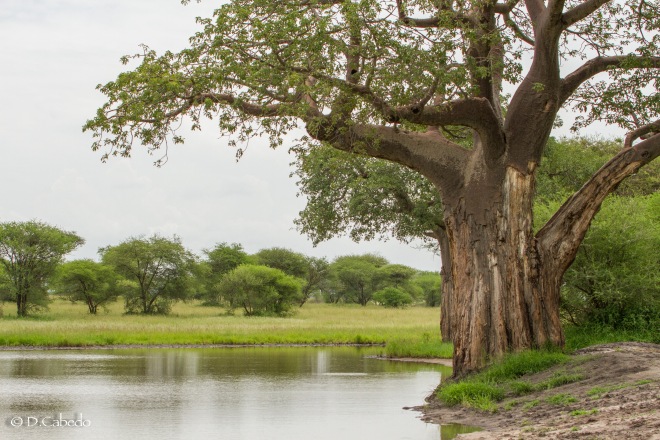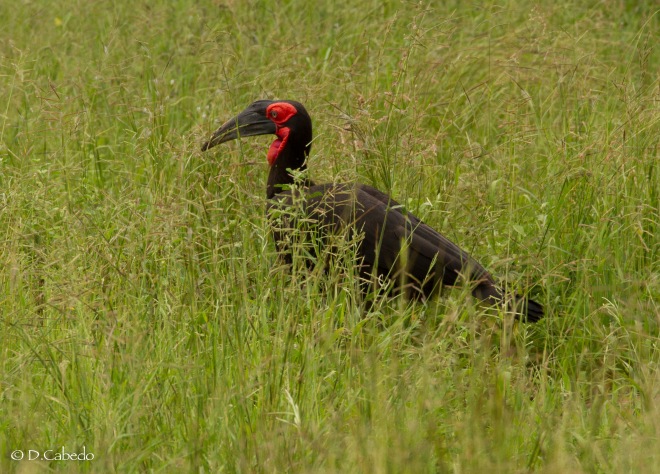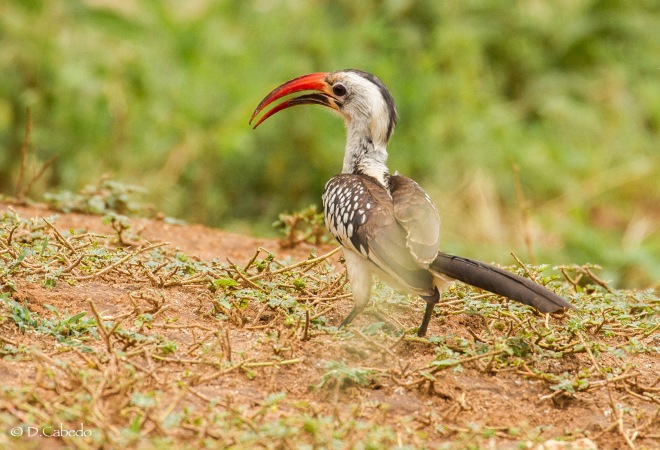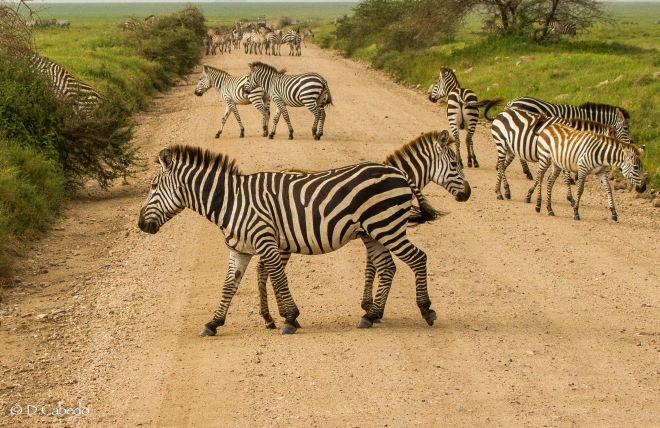
Serengeti National Park is the most famous national park in Africa, renown by hosting the largest mammal migration in the world.Every year hundreds of thousands of wildebeests and zebras migrate from the Serengeti plains to the Mara in search of greener pastures and water.
The vast park consists mainly in open grasslands in the the south, savannah with Acacia trees in the centre, and hilly woodlands and riverine forest along the Mara and Grumeti river in the north.
The Serengeti is home of more than 100 species of mammals including elephants, lions, cheetahs, leopards, buffaloes, hippos, rhinos, zebras, giraffes, wildebeests, impalas, Thomson’s gazelles, Grant’s gazelles, hartebeests, topis, hyenas, roans, Oryx, kudus, elands and many more.Specially remarkable are the large populations of wildebeests,zebras and lions.
The Serengeti has also more than 500 species of birds, which 5 of them are endemic.Fisher’s Lovebird, Rufous-tailed Weaver, Usambiro Barbet, Grey-crested Helmeted Shrike, Black-headed Gonolek, Hildebrandt’s Starling, Red-capped Robin chat, Grey-breasted Spurfowl, Kori Bustard, Secretary Bird, Rupell’s Griffon Vulture and Yellow-throated Sandgrouse are some of its birding attractions. The best time for bird watching is from November to April, when migratory species come here, although many other species of birds can also be found all year round.
We went from Tarangire to Twiga Campsite,in Mbto Wa Mbu.This little town lies near the shores of Lake Manyara.We arrived late evening.The camping area was overshadowed by some big trees.The tents were pretty decent and big enough.Most of our group slept on a tent, although others arranged their accommodation on the beautiful huts that are located beside the camping.
Next morning i woke up early to check the garden and little forest of the campsite.Around this area i could spot Pink-backed Pelican,Black-headed Heron,Sacred and Hadada Ibis flying to the lake.On the forest area i saw African Green Pigeon, see first picture below, Black Kite, Speckled Mousebird, Silvery-cheeked Hornbill, see second picture below, African Pied Wagtail and Spotted Morning Thrush.Around the gardens there was an active flock of Fisher’s Lovebirds, see third picture below, and other birds like Grey-headed Kingfisher, Speckled Pigeon, Common Bulbul and Black-headed Puffback.



Lake Manyara is another popular birdwatcher’s destination that unfortunately i didn’t have enough time to visit.Around mid morning our driver called us.We got into the car and spent several hours on the road.Finally we arrived at Ngorongoro gate, where our driver stopped for quite a while.The place was crowded with a long queue of jeeps waiting for their permits.
We went through a rough road to the ring of the Ngorongoro caldera.The views from the ring were truly awesome.The deep green grasslands were tinged with some little Massai villages.We stopped in the view point where we could see the massive caldera, with a huge lake on the centre and some animals that seemed small dots spread in the grassland.
We continued our journey towards Serengeti.Our car descended through a lateral road of the volcano.Finally, we reached the Serengeti gate early afternoon.
We entered the park at about 2 o’clock.I got impressed by the large flat grasslands that lay in front of us.The massive rock formations, called Kopje, interrupted the monotony of this landscape.While going along the rough road we could contemplate large herds of zebras, see first picture below, and wildebeests, see second picture below.I had never seen so many mammals concentrated in one national park !!


Our first bird encounter was a solitaire Common Ostrich very near the car.This bird is one of the two species of flightless birds that is found only in Africa.
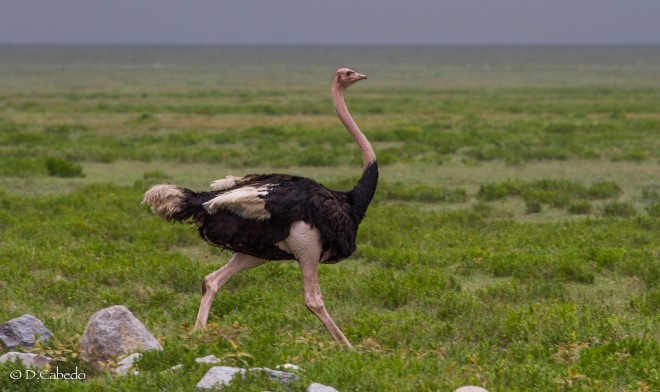
After a while,we spotted a Secretary bird, another iconic Tanzanian bird.This bird is well known thanks to many Africa documentaries.This terrestrial bird, unlike their raptor cousins, hunts its prey on foot.Its long legs are well adapted to catch a variety of preys: from insects to small vertebrates, including even venomous snakes.These intelligent birds also know how to take advantage of fires, trapping small animals that cannot escape the blaze.

Tawny Eagle, see first picture below, and Eurasian Hobby, see second picture below, were other interesting raptors spotted in the early afternoon.


The day was getting cloudy.Massive rainy clouds appeared in the horizon and it started to drizzle sooner than we expected.
A couple of African Lions slept on a kopje.Our guide told us that lions use quite often these rock formations to have better views of its surroundings and to find preys with ease.

We stopped in the middle of nowhere for a while.Tsetse flies were rampant here.Those flies are easily identified by its long proboscis, elongated shape and big size.They are attracted towards the heat, finding them sometimes near the engine of a car.I had some of them on my t-shirt but fortunately they didn’t bite me.
Late evening we spotted a lioness and a leopard lying on the branches of some trees.

We arrived at 7 o’clock in the campsite.We left our stuff inside the tent and we had some dinner.Our guide told us not to go out of the tent at night due to some wildlife sometimes pass through the campsite.I locked my tent and lay on the bed.I could hear the screams of a hyena on the nearbies and the sound of her steps passing close to my tent.I have to admit that was a bit terrifying !
It was a very productive day observing the intense wildlife activity !!
Next post, my second day in the Serengeti NP, with more pics of birds and other wildlife !!
See you soon my friends !!


